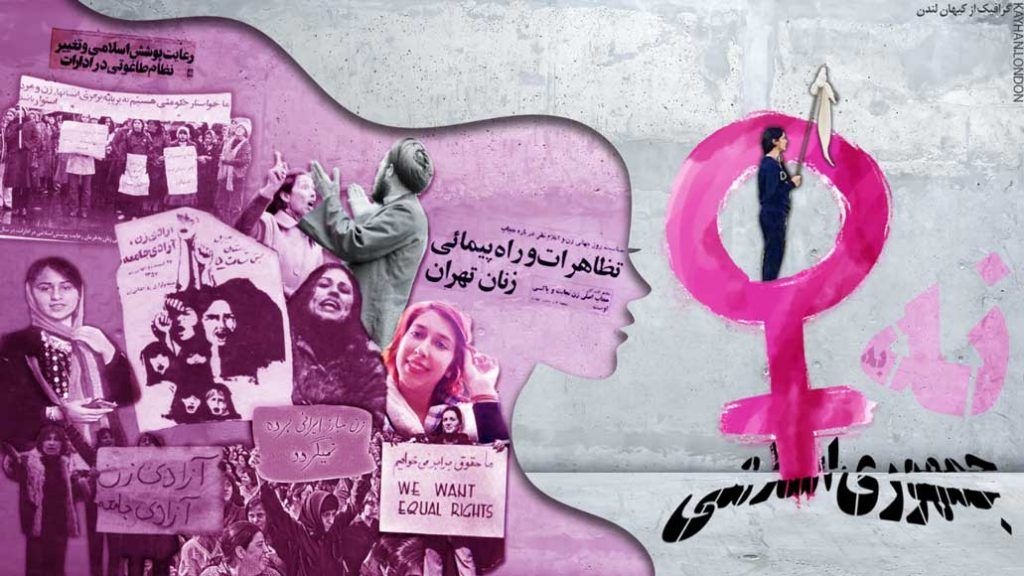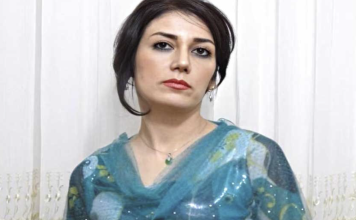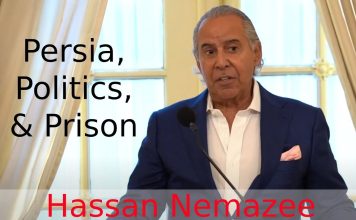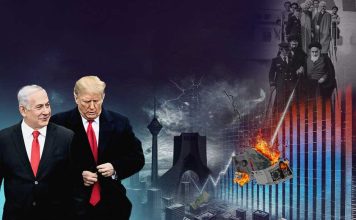Honor killings have increased at an alarming rate in recent years in Iran. While institutionalized patriarchy and misogyny are endemic in the Islamic Republic, there are also prevalent in popular culture and tradition.
Kayhan Life recently spoke to Dr. Shokoufeh Taghi, an Iranian author, poet, and researcher, about these issues. Dr. Taghi has written some 30 children’s books and a dozen books for adults. She has also published many research articles.
Dr. Taghi studied at Tehran University, the University of Glasgow in Scotland, and Uppsala University in Sweden. She received her Ph.D. from Uppsala University’s Department of Linguistics in 2000. Her doctoral thesis was titled “The Two Wings of Wisdom: Mysticism and Philosophy in Risalat Ut-Tair Ibn Sina.”
[aesop_image img=”https://kayhanlife.com/wp-content/uploads/2021/05/shokoufeh-taghi.jpg” panorama=”off” credit=”Dr. Shokoufeh Taghi.” align=”center” lightbox=”on” captionsrc=”custom” captionposition=”left” revealfx=”off” overlay_revealfx=”off”]
She then went on to receive post-doctoral degrees from the Yale University’s Department of Religious Studies, and was a guest researcher at Columbia University in New York City. She has also taught at the University of Gothenburg, Uppsala University, and Norrkoping University in Sweden.
Dr. Taghi has held many workshops and published several books in Farsi, including “Violence Against Women in Stories and History,” “The Meaning of Fortune in Iranian Oral Tradition and Written Works,” “Typology and Classification of Three Literary Genres: Songs, Melodic Stories and Legends Passed Down, in Iranian Oral Literature.”
The following is Kayhan Life’s interview with Dr. Shokoufeh Taghi.
Dr. Taghi, do you differentiate between misogyny and violence against women? Please give us your thoughts on this issue.
I believe violence against women is a more significant issue than misogyny, and that is why I titled my book ‘Violence Against Women in Stories and History.’ Violence against women is not simply a state of mind pointing to a particular type of thinking or pattern of behavior. It is a much broader problem and a cultural disease, manifesting itself as a deliberate effort to assault and destroy women. It operates from the premise that a woman is an evil entity who could ruin a man, and therefore, is worthless.
Misogyny does not automatically imply physical violence. Misogynists glorify men and demonize women. Although they believe women are inferior to men, they do not kill a woman with a cold or a hot weapon. People who commit violence against women intend to harm, maim, and even kill them. They are justifying their actions by alleging that religion has defined a woman as evil. People who commit violence against women, irrespective of their gender, take pleasure and feel powerful through their unhealthy behavior.
I have outlined my world view in ‘Violence Against Women in Stories and History,’ explaining that the terms ‘man’ and ‘woman’ have the same meaning. Each has played a defining and undeniable role in the creation and development of humanity. Although having different physical attributes and psychological capabilities, men and women have led the world either jointly or separately.
So ignoring or dismissing one sex in favor of the other perverts religious, racial, ethnic, social, cultural, and economic values by defining them in terms of sex and sexuality, which ultimately discriminates against one gender and favors another. It brands one sex as evil and the other as godly and attributes the world’s creation to one gender, and demonizes the other.
Superstition and lack of understanding combined with unsafe living conditions can lead to deadly violence. Whether caused by fear or the desire to terrorize, overpower, and dominate, violence is deeply rooted in weakness. In such a climate, religious doctrines, specifically designed to control the public, validate the oppressor. They enable authorities to reward and punish people using fear tactics, threats, and discriminatory laws. Killing a demon is deemed a benevolent and sacred act under such conditions.
According to this line of thinking, women are weak, and weakness is equated with being worthless, and men are strong and therefore are closer to God. In such a society, a woman is called zaifeh [weakling], and in contrast, a worthy and courageous human is called a ‘man.’ While loyalty, trustworthiness, and truthfulness are deemed male characteristics, being fragile, inept, weak, and scared are associated with being female. A woman is quickly tempted and fooled and, therefore, cannot be trusted. While a man’s sexual prowess is God-given and praiseworthy, a woman’s sexual power is viewed as shameful and must be repressed.
You have written that backward and archaic views and values are prevalent in oral literature and storytelling.
Violence against women has been symbolic or blatant in storytelling and has been a persistent social occurrence and a historical fact. Not only is it not consciously censored, but it is sometimes also deliberately promoted. Many people who commit acts of violence are even rewarded and gain social acceptance and religious approval.
Stories, together with songs and historical accounts, can serve as vehicles to illustrate institutionalized violence.
In many European countries, there are comprehensive laws protecting women’s rights that minimize deliberate abuse. Yet in patriarchal societies, violence against women is sanctified. It is impossible to prevent this kind of violence until women achieve equal rights and are viewed as human beings in society.
The situation will remain the same as long as violence against women is sanctified and girls are mere commodities in marriage transactions. It is also difficult to change the cultural climate when some women do not condemn violence against themselves and other women and accept it as part of a long and established tradition.
People develop a greater capacity for compassion and empathy only when they develop the ability to see some of themselves in others and a bit of others in themselves. They grow and mature by creating a critical view of the violence they detect in themselves and experience in their environment.
You place particular emphasis on the significance of controlling the availability and production of food.
Recorded history and ancient documents, which have been preserved in many countries worldwide, including in Iran and neighboring countries, show that financial considerations play a crucial role in the relationship between men and women. Undoubtedly, some regions have been suitable for farming because of their geographical conditions.
While some agricultural lands have allowed cattle and sheep farming, mountainous areas and deserts have only been suitable for livestock farming. While people in some regions made a living by hunting and fishing, others had resorted to robbery to survive.
Commerce, trade, industries, and other economic activities dominated people’s lives in urban areas. These activities have become progressively more complex through the years and continued to the present day. A woman who can protect and support herself, her children, her parents, and even her siblings is not a ‘weakling.’ Her self-respect and her being valued by others will affect her social and cultural ties.
However, when a woman is subjected to social and religious filters since childhood, she will not grow as a person and will not gain independence. The system that arrests her development considers such restrictions ‘sacred virtues’ in that woman. As a result, a massive human resource that could benefit the world immensely goes to waste. Women have been forced to marry at an early age and do menial work for thousands of years.
Does your research confirm that Iran was under matriarchal rule thousands of years ago?
Archeologists and experts have discovered that people lived in peace, unity, and harmony in the ancient [Sumerian] City of Arcata and Shahr-e Sukhteh [in the southeastern Sistan and Baluchestan Province], where there were no wars. A fundamental shift in the ethnic composition of Iran at the start of the Iron Age [500 BC-332 BC] triggered the emergence of patriarchal rule in the Median and Achaemenid empires, resulting in male deities replacing goddesses.
Many statutes from the Median Dynasty have been discovered in the Iranian plateau, depicting pregnant goddesses and powerful empresses. Archeologists have found an ancient settlement in Catalhoyuk in southern Anatolia in Turkey that dates back to 8,000 years ago. The region was part of the Iranian plateau at one time. All the houses in the ancient city were identical, each equipped with a stove. It was an agricultural community.
Evidence shows that men and women had equal social and cultural status. Statues of a pregnant goddess symbolizing motherhood and the head of a bull adorned every fire temple in the ancient city. There is ample evidence that the town did not experience war and destruction for several centuries. There have been similar archeological discoveries in the southeastern provinces of Kerman and Sistan and Baluchestan, and in neighboring Pakistan.
You refer to matriarchy. I must stress that mothers and not matriarchy played a central role in these regions. It was more likely that women assumed authority around water wells or routes where caravans traveled. People in these regions most likely worshipped the Goddess Ishtar [Inanna, Goddess of sex, war, justice, and political power]. Her temples have survived until the present day.
People in southern, southeastern, northern, northwestern, and central Iran worshiped mother figures. Women, as mothers, were held in very high esteem in these regions. Local inhabitants had a robust feminine culture in which mothers played a central role. Mothers kept the fire alive in their homes.
Small figurines of women with their breasts full of milk have been found in these homes. An excellent example of such symbols is Anahita [the ancient Persian goddess of fertility]. In contrast to Ishtar, the goddess of the desert, Anahita never established ‘sacred prostitution.’
Matriarchy and the exaltation of mothers are two distinct traditions. They have both survived until the present day. Patriarchy and chauvinism also developed as different cultures in various regions before merging and becoming the dominant ruling system with the Assyrians.
How did the development of agriculture, livestock farming, and urban living — which began 7,000 years ago in the Iranian plateau — help those societies to find their identities in matriarchy and worship of mothers?
The Iranian plateau is a massive geographical region that is as large as a continent. Various ethnic and cultural traditions developed parallel to each other in this vast area. The ancient Sumer civilization [4,500 BC-1,900 BC] predates the Assyrian Empire [2,500 BC-609 BC] and Babylonian rule [1,895 BC-539 BC]. It was a dominant culture that invented writing, the wheel, agricultural and urban rules.
They occupied a vast region in southern and southeastern Iran, including today’s Kerman and Baluchestan provinces. There is evidence showing that people in these regions worshipped male and female deities. While male gods governed many elements and situations, others were controlled by goddesses.
Mother goddesses dominated hunter-gatherer, agricultural, and livestock farming communities, which predated the invention of the wheel, urban living, and complex economies.
Food insecurity is directly tied to the increased risk of mortality. Favorable weather and agricultural products improve quality of life. These conditions do not exist in scorching deserts where water is scarce. The status of men is elevated in such societies because they are violent, warmongering, and can father children. Such a mentality persisting in regional cultures gains social and political significance and is ultimately normalized within a community. We see an example of such development about 3,000 years ago with the emergence of the Assyrian civilization.
Stone tablets from the Assyrian period reveal unimaginable cruelty by one of Iran’s neighbors. The record shows that those people were proud of their brutal culture. Not only is there a direct link between patriarchy, warmongering, and monotheism, but violence, war, and despotic rule are tied to sacred religious beliefs.
Religions born in deserts and shaped by that environment achieve legitimacy and popularity through force, coercion, and oppression and morph into a governing system in which men and women engage in fierce competitions to gain favors with the state. Such a society honors those who can wage wars, commit violence, and ostracizes those who cannot fight. As a result, women who step in men’s shoes suppress their femininity, put on battle gear, become masculine or act like men. Anyone who behaves differently, meaning like a ‘woman,’ is marginalized and sold into marriage.
Changing behavior is a process that can occur through proper laws, creating a viable economic system, and promoting healthy social norms, examples of which can be seen in many European countries. It is a step-by-step process of making humans understand themselves and others better. People will view violence differently once a society ascribes different meanings to power and respect.
We must resist and reject any attempt to normalize violence in society. Safety and security would allow a community to grow. Women and children can better realize their potential in a safe environment.








